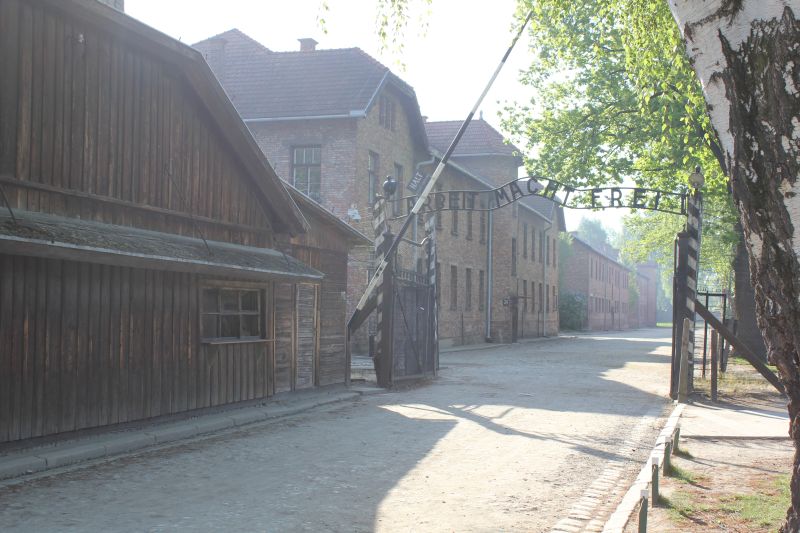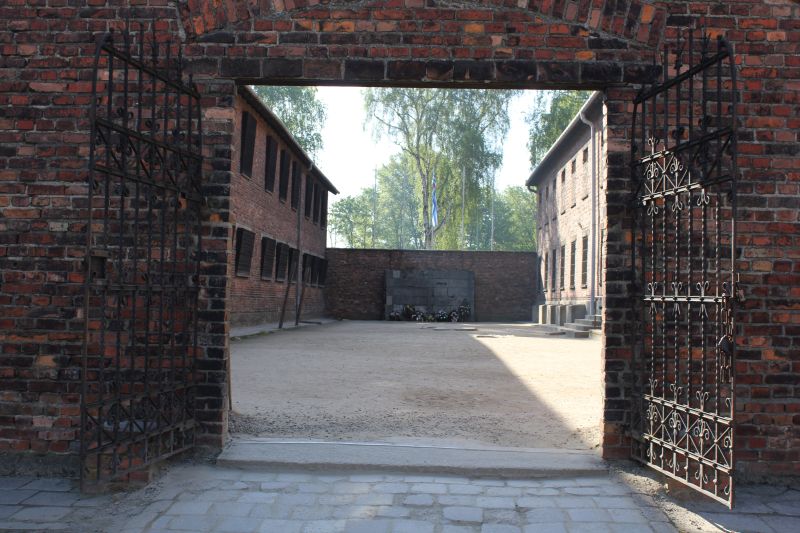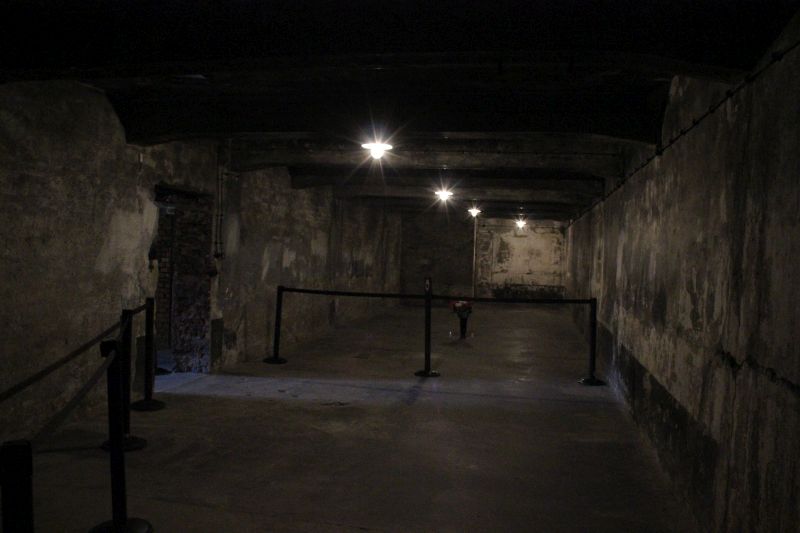We arrived here at around 5.45pm, when closing time was 6pm. Fortunately you could stay the night in the car park, meaning that we could have a look early the next day. We camped up, made dinner and the Dave and I took in turns to have a wander around the outskirts of the camp.
It was a clear night and the light was beautiful. A very surreal and eerie experience to be wandering around this space in complete solitude. There were no large groups of people, no one in front of you reading the signs and a very appropriate atmosphere, during which to take it all in.
From the gate you could see the symbolic “Arbeit macht frei” entrance, sending shivers down your spine. Dave picked up a couple of guide books which we then took back to the van for a quiet read before the next day.

Gates opened at 8am and we were there. We really wanted to capture the experience, again without the crowds of other people and tour groups. From 8-10am and 3-6pm each day, you can do self-guided tours and free of charge, or you could pay for a tour guide later in the day, which takes about 3 ½ hours, including visits to all three sites. (Auschwitz I, Auschwitz II-Birkenau and Auschwitz III- Monowitz). As we were with the kids, we opted out of the tour. We were very glad to have chosen the early timeslot too and would recommend that to anyone visiting.
Obviously my overall impression of the place was horror. In fact no adjective could justly describe the atrocities, terror and cruelty that went on here. I am struggling to understand how it came about that so many people could get together and decide that these ‘policies’ in the camp to ‘cleanse the earth’ were acceptable. How can you force starving men, women and children into those ‘showers’? How could you kick people outside, naked, in freezing Winter conditions and throw freezing cold water over them, because they may have not made it to bed on time? How could you publicly murder people in an attempt to set an example to the other prisoners of what not to do? The questions go on …

To see the rows and rows of photos of the murdered prisoners along the walls of some of the blocks was eye opening. All heads shaved, all wearing the striped clothing, all dead. And these rows of photos were a small representation of the 1,100,000 people who lost their lives here; through gassing, shooting, hanging, beating, starvation, human experiments or sheer physical exhaustion. And why? Because these innocent people were Jewish, Polish, Soviet POWs, gypsies or homosexuals. This also included “smaller numbers of prisoners, ranging between a handful and a few hundred, who were sent to the camp from virtually every country in Europe”. (Auschwitz- Birkenau, the past and the present)

One of the paintings that will forever stick in my mind is a shower scene, with skeletal type male naked bodies standing on one side of the gas chamber and waif-like women and children on the other. Absolutely terrified looks on their faces and a little boy clutching on for dear life to his mother’s leg.

David and I deliberated long and hard about whether it was appropriate to take our kids here. In the end, we decided to take them, thinking that a lot of it would pass over them. We warned them that this was not supposed to be a fun part of Europe, but an important one and they were to be on their best behaviour, understanding that this was a sombre place. It was also why we didn’t do the tour.

We were glad to have made the decision to take them as James was especially interested and inquisitive and has also contributed to our visit here. Abbie missed a lot but also asked some questions. And they were both very respectful. Trying to put information in their terms such as ‘imagine 11 Munich football stadiums full of people’ and ‘there wouldn’t have been any skipping children around here’ helped their understanding of the enormity of this place.
“Auschwitz is forever a painful expression of the world’s bad conscience. The remains of the Nazi death camp reminds us of the darkest moments of human history”. (Auschwitz-Birkenau; the past and the present)
